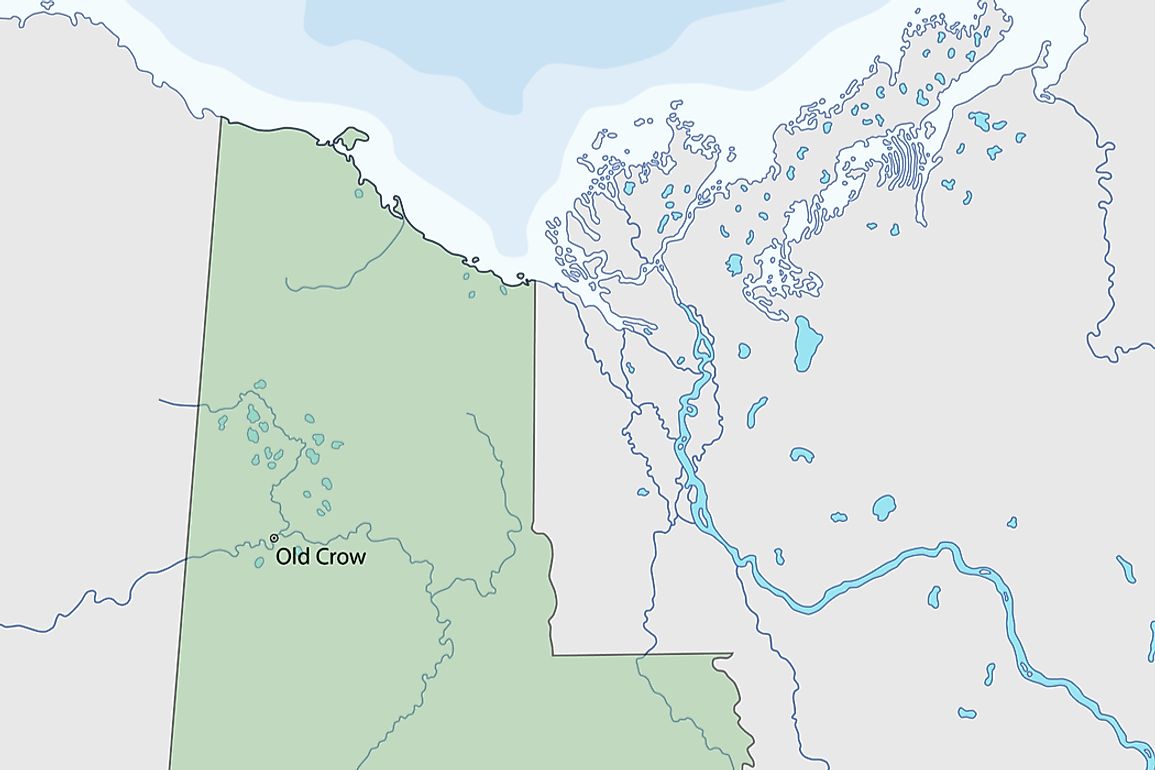Where Is The Bluefish Caves Archeological Site Located?

The Bluefish Caves archaeological site is situated in Yukon, Canada, approximately 34 miles southwest of the Vuntut Gwichin. The site consists of the three sites containing the oldest undisturbed archaeological material in Canada. The Bluefish Caves is located on the limestone ridge that overlooks the upper Bluefish River. The excavations contain uncovered artifacts such as stone, bone tools, and also remain of several butchered animal remains. The tools discovered from the caves include micro-blades and flakes that are made from high-quality stones that are believed to have been imported from other places. There are also several tiny flakes that resulted from tool-making. The artifacts were discovered alongside the bones of extinct animal species.
Overview of the Bluefish Caves
The Bluefish Caves contain evidence of the episodic human activities from 25,000 to 12,000 BP. It may be an important archaeological site for the Late Pleistocene Eastern Beringian and Canadian cave. The caves contain evidence of the earliest human settlement in the North America. The caves and artifacts are also an indication of a well-marked transition between Pleistocene and Holocene. The animal remains are also evidence that the animals were adapted to the northern condition. Bluefish Cave site in Yukon was discovered in 1975 by the University of Toronto’s Northern Research Program. The excavation of the site began two years later in 1977, lasting up to 1987 and was carried out under the supervision of Jacques Cinq-Mars and several other researchers. Cave I contain bones of several animals that appear to have been dragged there by their predators. However, the presence of tools suggests the presence of humans.
Location and Environment
The Bluefish Caves are located 34 miles southwest of the Vuntut Gwichin village of the Old Crow. The site overlooks the Bluefish River which is one of the tributaries of the Porcupine River. The caves are located at the western ridges dominating a narrowing of the Bluefish River. These caves range in sizes, between 10 and 30 cubic meters, and contain sediments of varying depths. The three caves are marked I, II, and III. Bones of vertebrates such as birds, fish, and mammals are preserved within the caves. The region is of Devonian limestone hills at the northern end of the Keele Range which forms the massif of the Ogilvie Mountains marking the center of Yukon. The area surrounding the Bluefish caves has characteristics similar to boreal forest in the mountainous region.
Artifacts
The Bluefish Caves consist of three classes of lithics, butchering marks found on some animal remains, and bone tools. The artifacts found in the loess layer of the caves include micro-blades, angle burins, burin spalls flake fragments, and notches among other artifacts. Some of the artifacts seem to date from the early period characterized by the “birch” zone while others are as recent as between 10,000 and 12,000 BP. There are also dozens of microflakes that may have been formed as a result of flaking and retouching of the tools. The microflakes have all the morphological characteristics of the larger flakes. The other class of lithic artifacts includes small cobbles which were collected from the base of the loess, with their presence explained by the animal activities in the area.







